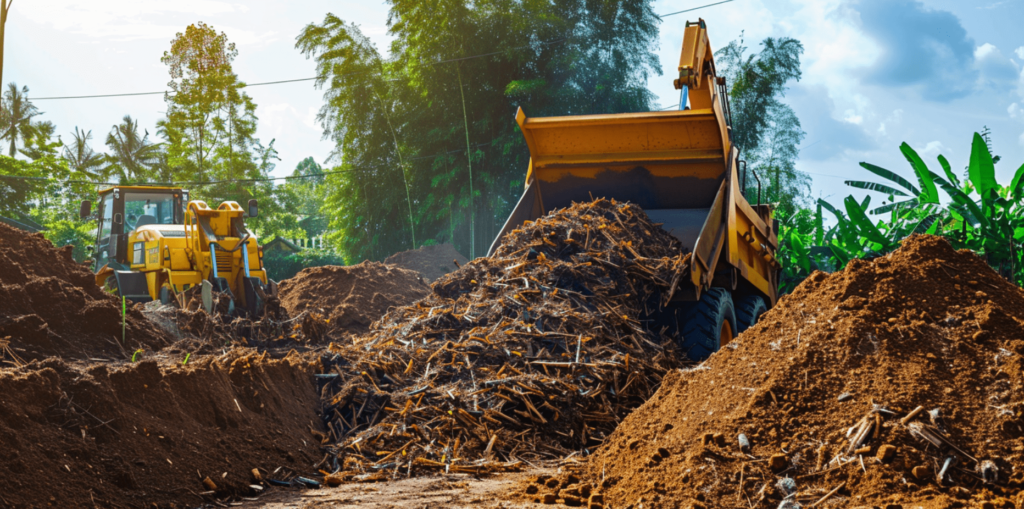Welcome to our comprehensive guide on the crucial role of screening equipment in soil and compost preparation. Whether you’re an avid gardener or involved in construction projects, understanding how screening equipment can transform ordinary dirt into invaluable resources is essential. Screening equipment is vital in refining the raw materials into fertile soil or valuable compost by effectively removing debris, rocks, and large particles.
This article will explore the benefits of screening equipment, the different types available, and the step-by-step screening process. We will also answer a common question – what to do with construction waste. Let’s dive in and discover how screening equipment turns dirt into gold!
The Benefits of Screening Equipment
Screening equipment plays a crucial role in soil and compost preparation, offering a range of benefits that contribute to sustainability and waste reduction. By utilizing screening equipment, construction materials can be effectively reused, minimizing waste and promoting environmental responsibility.
One of the primary advantages of using screening equipment is the opportunity to repurpose construction materials. Instead of discarding them as waste, they can be screened and separated, allowing for their reuse in various applications. This reduces the amount of waste going to landfills and helps conserve natural resources.
In addition to waste reduction, screening equipment efficiently manages construction waste. Construction sites often generate a significant amount of debris and unwanted materials. These materials can be properly sorted and recycled by implementing screening processes, reducing the environmental impact, and promoting sustainable practices.
The reuse of construction materials through screening equipment also presents economic advantages. By repurposing these materials, construction companies can save on the costs of purchasing new materials. This makes screening equipment an environmentally friendly choice and a financially viable solution.
Furthermore, utilizing screening equipment in soil and compost preparation supports the circular economy concept, emphasizing reducing, reusing, and recycling materials. By screening out impurities and undesirable substances, such as rocks and large particles, the resulting soil or compost is of higher quality, enhancing its value and usability for gardening and landscaping purposes.

Types of Screening Equipment
Various types of screening equipment play a crucial role in achieving optimal results in soil and compost preparation. Let’s explore some of the commonly used machines and technologies:
- Trommel screens: These cylindrical drum-shaped screens are highly efficient in separating different-sized materials. They rotate and lift the material, allowing smaller particles to fall through while larger ones continue to the end of the drum.
- Vibrating screens: Vibrating screens use vibration to separate materials based on size and shape. They consist of multiple layers of screens with different-sized openings, allowing for precise particle separation.
- Star screens: Star screens are a popular choice for screening bulk materials. They use rotating star-shaped discs to separate the material based on size. The smaller particles pass through the gaps between the discs, while the larger ones are guided to the end of the machine.
Each type of screening equipment has its own advantages and applications in soil and compost preparation. Understanding their capabilities can help professionals select the most suitable equipment for their needs.
The Screening Process
Screening equipment plays a vital role in achieving a refined and high-quality end product in the soil and compost preparation process. The screening process involves several steps that effectively separate unwanted debris, rocks, and large particles from the soil or compost.
Here is a step-by-step guide to the screening process:
- Preparation: Before screening, it is essential to ensure that the soil or compost is free from visible contaminants and adequately prepared. This may involve removing large objects manually and breaking down any clumps present.
- Feeding: The soil or compost is then fed into the screening equipment, which can be a trommel screen, vibrating screen, or star screen. These machines utilize different mechanisms to efficiently separate materials based on size.
- Screening: As the material passes through the screening equipment, it undergoes a series of sieving actions. The screens within the equipment have varying mesh sizes, allowing the smaller particles and desired organic matter to pass through while retaining larger objects and debris.
- Separation: The separation process involves the continuous movement and agitation of the screened material. This helps ensure the finer particles are properly distributed while any remaining clumps or impurities are further broken down and separated.
- Collection: Once the screening process is complete, the refined soil or compost is collected at the designated outlet. At this stage, inspecting the end product for quality and making any necessary adjustments is crucial.
- Reuse or Distribution: The screened and refined soil or compost is now ready for reuse in gardening, landscaping, or construction projects. It can improve soil quality, promote plant growth, or serve as a valuable resource in various applications.
The screening process, facilitated by reliable screening equipment, ensures that the soil or compost is properly refined and free from unwanted contaminants. This results in a high-quality end product essential for prosperous soil and compost preparation.
Bottom Line
Screening equipment plays a vital role in soil and compost preparation. Throughout this article, we have explored how screening equipment transforms raw materials into fertile soil or valuable compost for gardening or construction purposes.
Screening equipment refines the soil and compost by effectively separating unwanted debris, rocks, and large particles, resulting in a high-quality end product. This not only enhances the soil’s nutrient content but also ensures that the compost is free from contaminants, making it ideal for various applications.
Whether reusing construction materials to reduce waste or creating nutrient-rich soil for gardening, screening equipment offers numerous benefits. It promotes sustainability by enabling the reuse of materials and provides practical solutions for construction waste management.
In conclusion, investing in high-quality screening equipment is essential for achieving optimal soil and compost preparation. This equipment transforms ordinary dirt into valuable gold, supporting sustainable practices and enhancing the overall quality of gardening or construction projects.
